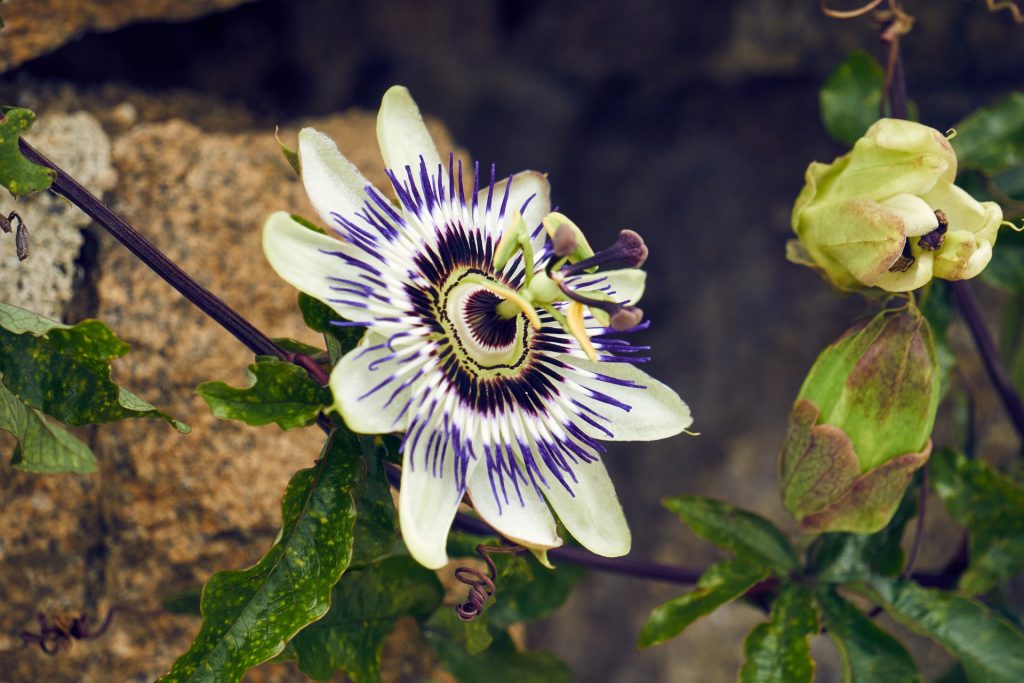 Benzodiazepines tend to be used to treat anxiety, but they can cause dependence and there is a risk of death with their use. Alternative treatments for mild to moderate anxiety are therefore of interest as they tend not to be associated with any adverse effects. Passionflower is one such alternative remedy. Passionflower refers to a group of plants that contains over 400 species and many of these have been shown to have beneficial effects against anxiety. Most studies on the anti-anxiety effects of passionflower have investigated Passiflora incarnata, a European species of passionflower. However, other species appear to show similar properties and this may relate to the fact that the different species have similar phytochemicals within their extracts. These phytochemicals include the flavonoids chrysin and luteolin, and the alkaloids harman and passiflorin. Of the flavonoids present in Passiflora plants, the flavone chrysin has been shown to be an important active component that is required in part for its anxiolytic effects.
Benzodiazepines tend to be used to treat anxiety, but they can cause dependence and there is a risk of death with their use. Alternative treatments for mild to moderate anxiety are therefore of interest as they tend not to be associated with any adverse effects. Passionflower is one such alternative remedy. Passionflower refers to a group of plants that contains over 400 species and many of these have been shown to have beneficial effects against anxiety. Most studies on the anti-anxiety effects of passionflower have investigated Passiflora incarnata, a European species of passionflower. However, other species appear to show similar properties and this may relate to the fact that the different species have similar phytochemicals within their extracts. These phytochemicals include the flavonoids chrysin and luteolin, and the alkaloids harman and passiflorin. Of the flavonoids present in Passiflora plants, the flavone chrysin has been shown to be an important active component that is required in part for its anxiolytic effects.

For example, in one study, researchers investigated the effect of chrysin extracted from Passiflora incarnata on the behaviour of rats. Rats were injected with chrysin and then exposed to experimental stress to induce anxiety. The rats receiving chrysin demonstrated significant reductions in their anxious behaviour and this effect was similar to that seen from the benzodiazepine drug midazolam, but of a smaller magnitude. It has been hypothesised that chrysin is able to decrease anxiety through interaction with the GABAA receptor in the central nervous system. Chrysin has been suggested to be to equipotent to the benzodiazepine drug diazepam but without the sedative or muscle relaxant effects.
Eat Well, Stay Healthy, protect Yourself
RdB
